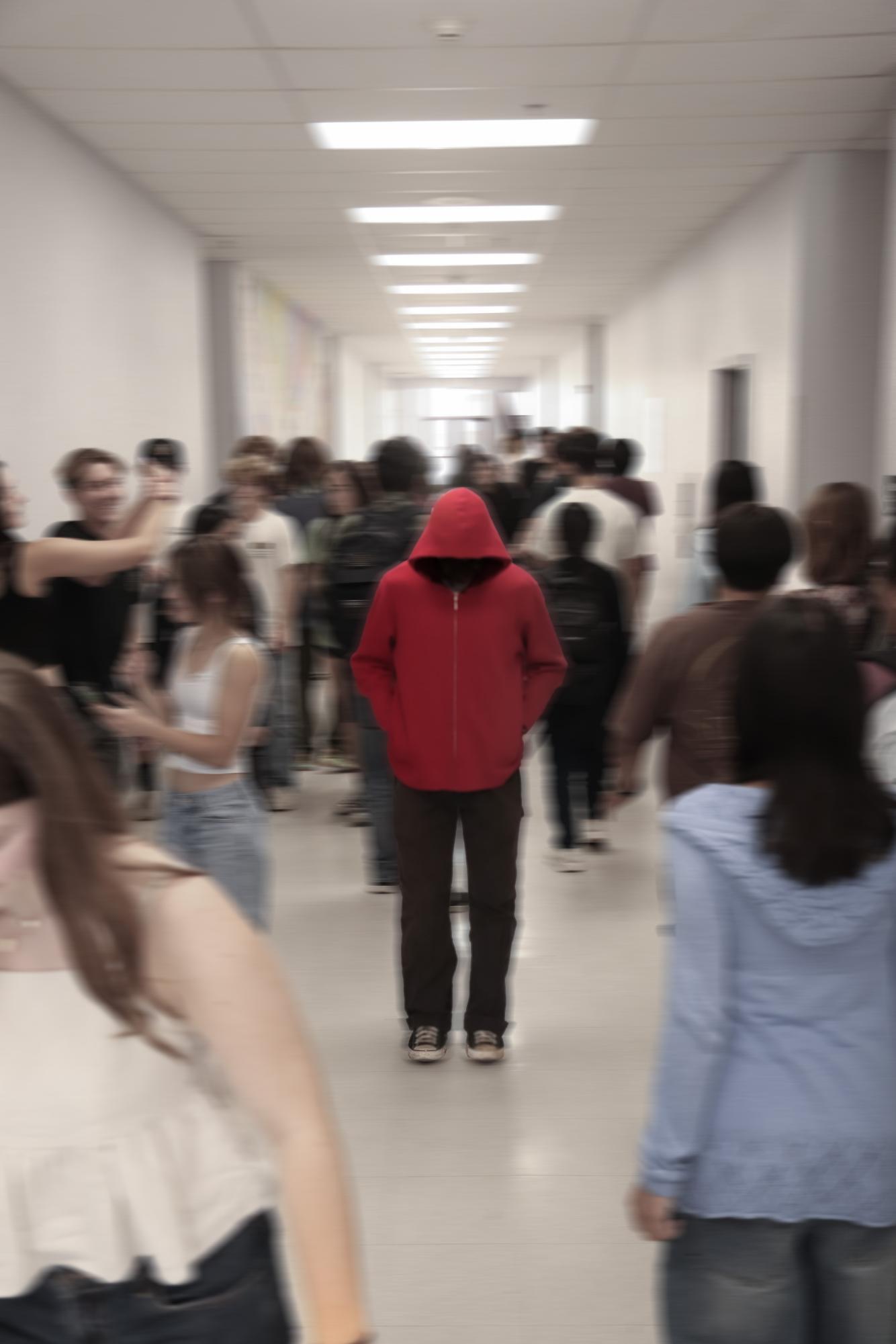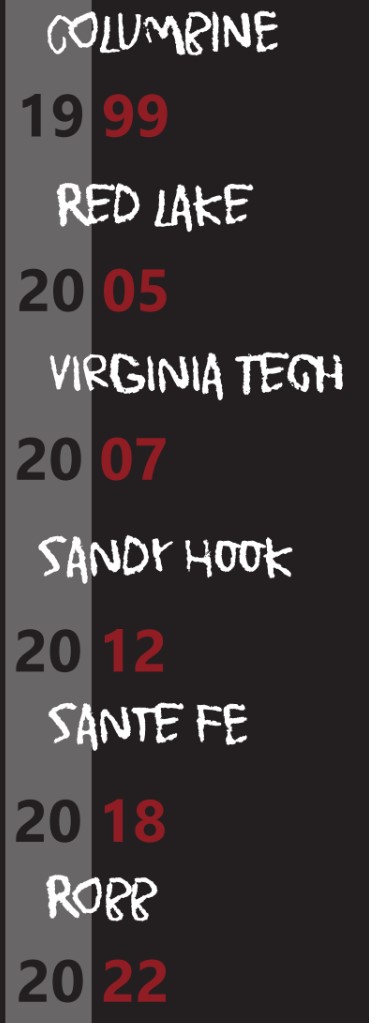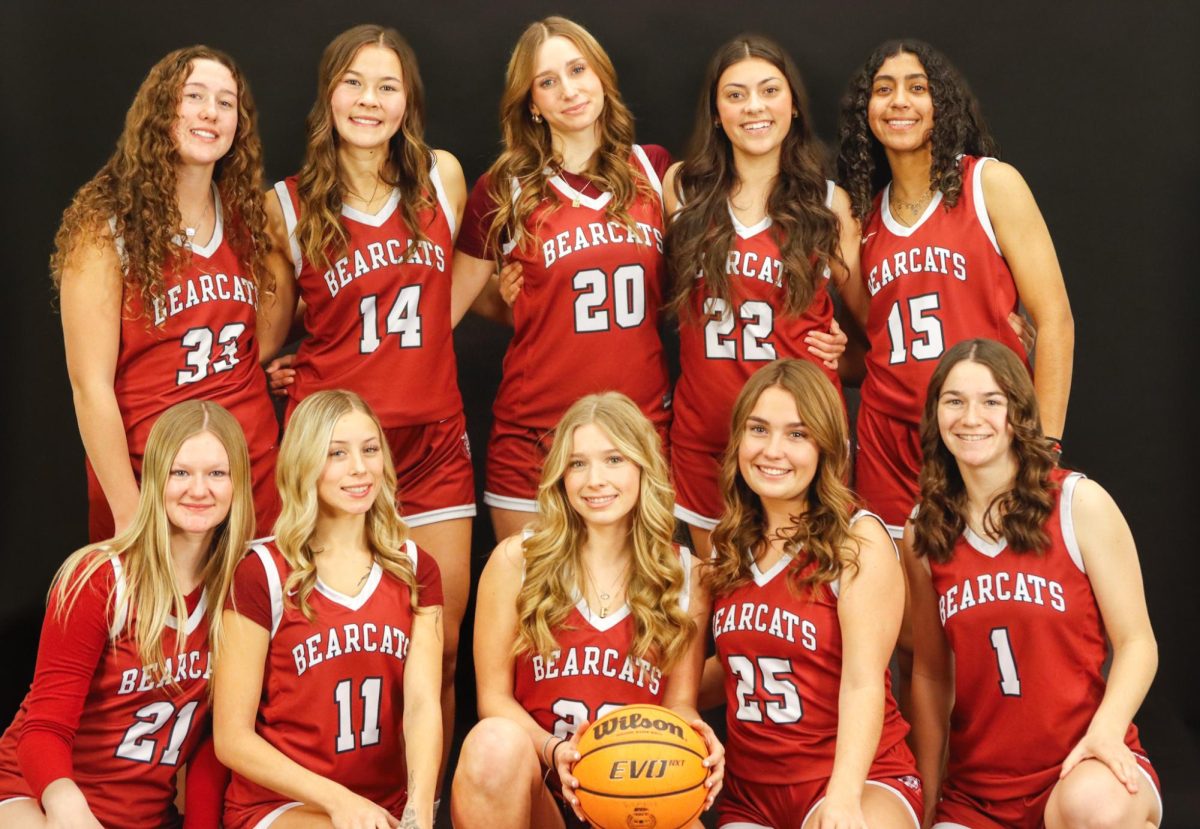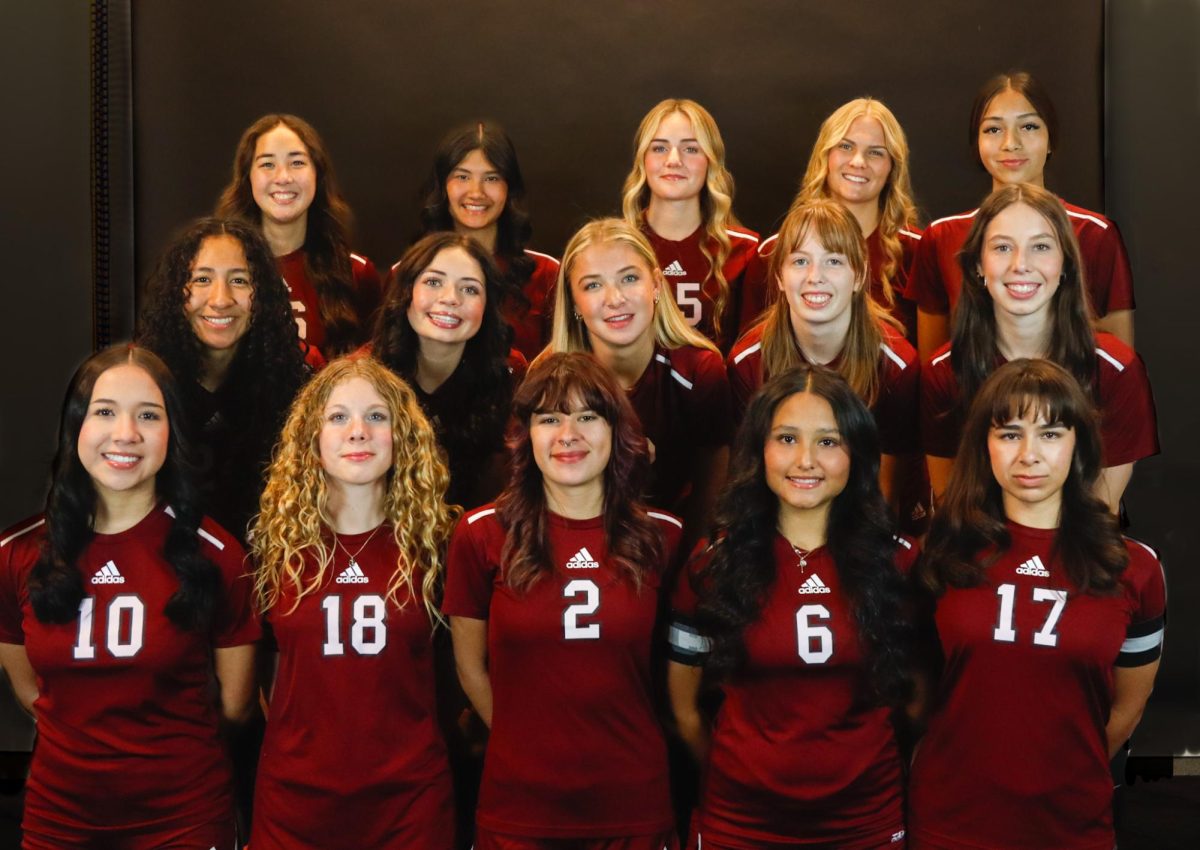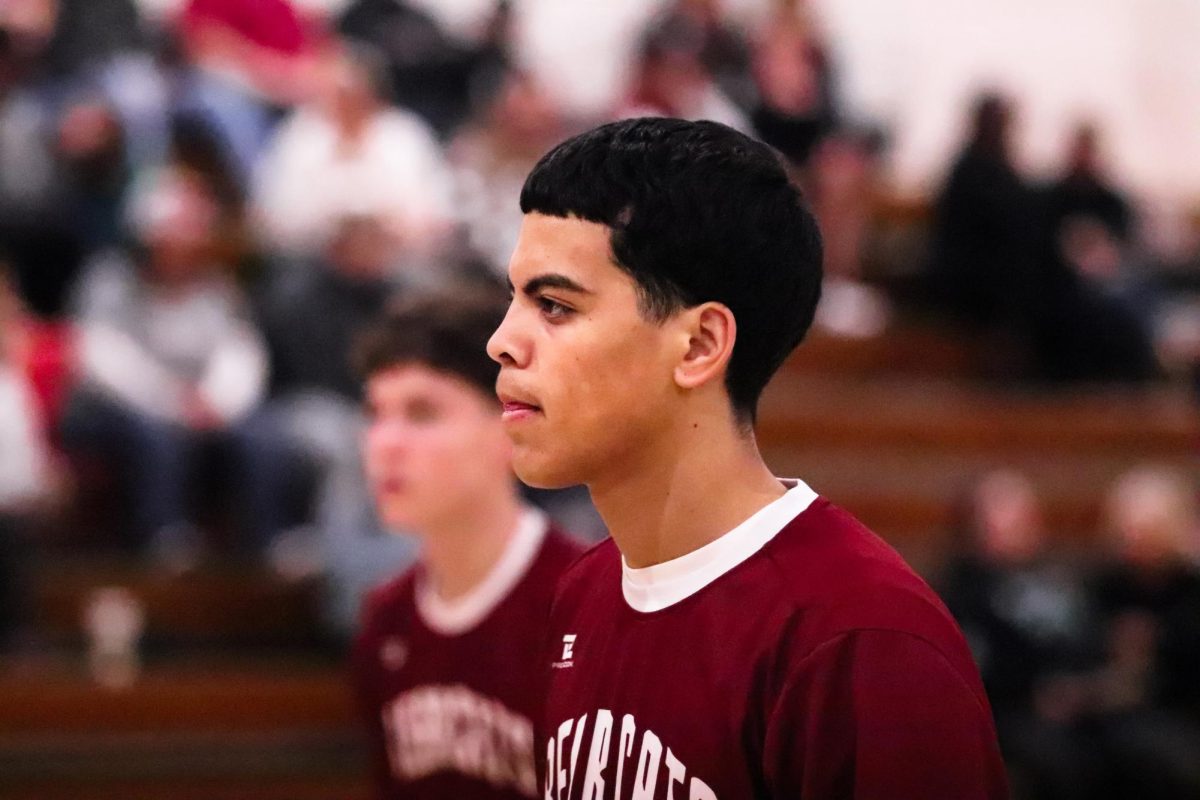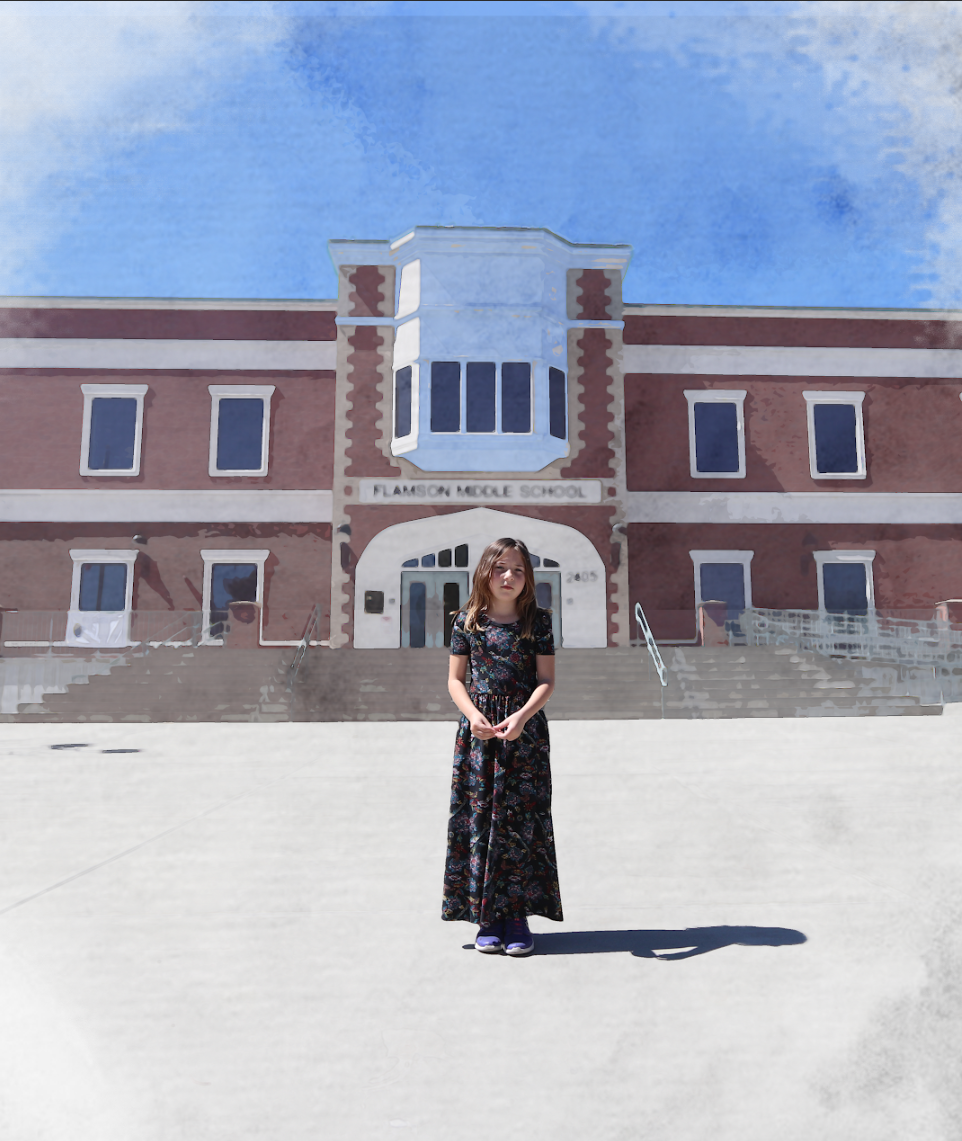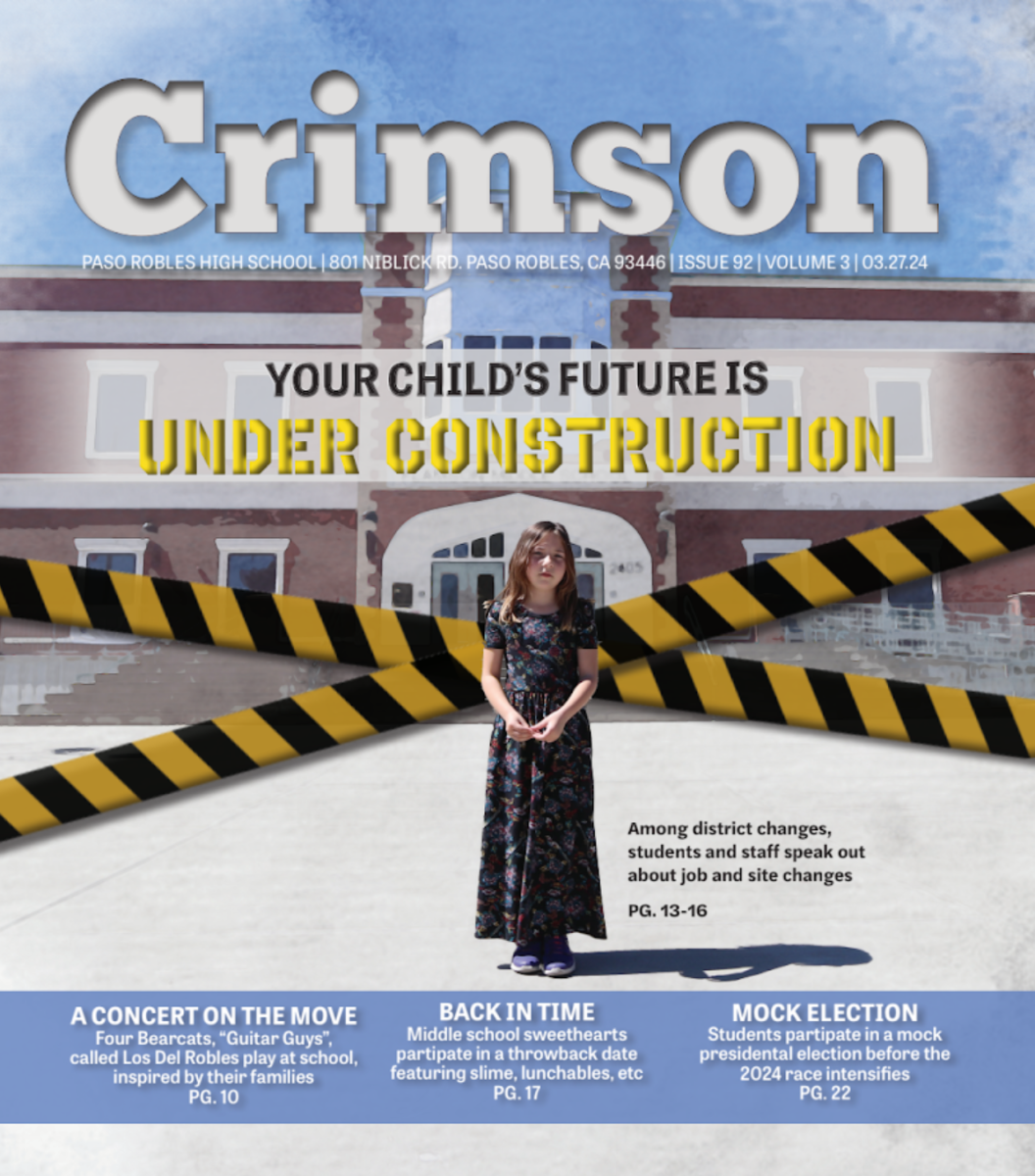Campus Safety

“It would never happen here,” is what some, if not many, think when the topic of school shootings inevitably is brought up. Some use humor to cope; others flinch at the thought of such a tragedy. But the idea of school shootings is now more important than ever. School shootings have occurred at least 50 times this year in the U.S., according to the Gun Violence Archive at CNN. While reaching out for interviews on this topic, it was clear that students and teachers were hesitant about what they wanted to say on this sensitive subject. They wondered what they could say. We felt the same way as journalists, but also felt convicted that talking about safety – and everyone’s role in community safety – is greater than the fear and hesitancy we felt. Crimson Newsmagazine dedicated the October
Issue to school shootings not as a way to offend or frighten but to contribute to a larger conversation that could save lives. We believe that students at PRHS owe it to their community, their school, and their classmates to report and speak out against violent threats.
There is work to do. We have reluctant students among us. In a school survey of 100 students, 12 percent said that they would not inform authorities if a potential threat was made and it crossed their ears or phones. We urge students to step up into the power of their reporting. “It’s something like 94% of school shooters say they’re gonna do it before they do it. That means if 94% are saying something, somebody is hearing it, you can tell us,” Assistant Principal Michael Godsey said. We agree with Godsey that ALERT and INFORM are the most important actions in the ALICE protocol that has been communicated to students in their Tutorial classes. Without students’ willingness to alert to possible threats on campus, we lose our primary defense mechanism. “If there are 2000 students here, that’s 2000 sheriffs listening and reporting what’s going on,” Godsey said. As students sit in class, talk at lunch and scroll on social media, they are abundantly open to catching any threat. Though some find comfort in thinking “it wouldn’t happen here,” we as a school, and as students have the power to keep that statement true.
School shootings are as prevalent in America as they are fear inducing and an understanding of the history of this phenomena is essential. School shootings are commonly believed to have become a more hot topic issue in 1999 with the infamous Columbine High school massacre. “It was the first major one,I lived about 30 minutes away from Columbine, It was on local news for us for 1 to 2 years.” PRHS assistant principal Micheal Godsey said. While Columbine remains the most infamous school shooting in American history many others have occurred which further perpetuated the fear which Americans feel today. Following Columbine, major school shootings in the early 2000’s had begun to occur around five to four times a year with spikes seen occasionally. The most
prominent shootings in this era were seen to be the Virginia Tech massacre in 2007, killing 32, and the Red Lake shootings in 2005.
(Vigderman, 2024). However, as we enter the 2010’s and 2020’s there is a notable increase in the amount of shootings and mortality rates in those shootings. More recent school shootings which have come into prominence are the Uvalde, Texas 2023 shooting which sparked discourse surrounding perceived police incompetence, and the Apalachee massacre this year. The propensity of school shootings in America has only increased with time as the amount of school shootings has increased at exponential rate throughout the 2000’s. According to the Washington Post, 417 school shootings have occurred in America since the Columbine shooting, leading to a staggering 300,000 children in America during the last two decades experiencing gun violence (Cox, 2024). This influx and constant coverage of school shootings has manifested in the fear many American parents and students feel today. In 2018 the Pew Research Center conducted a study with the goal of gauging the amount of parents and school attendees concerned about a school shooting. Its findings are revealing,”Parents of teenagers express similar levels of concern as teens themselves, with 63% saying they are at least somewhat worried about the possibility of a shooting happening at their child’s school.” This issue is especially relevant to PRHS as according to the findings of security.org senior editor Eliza Vigderman.”Nearly 60 percent of active shooter incidents at educational institutions since Columbine have occurred in high schools, and about 21 percent have occurred in middle or junior high schools.”
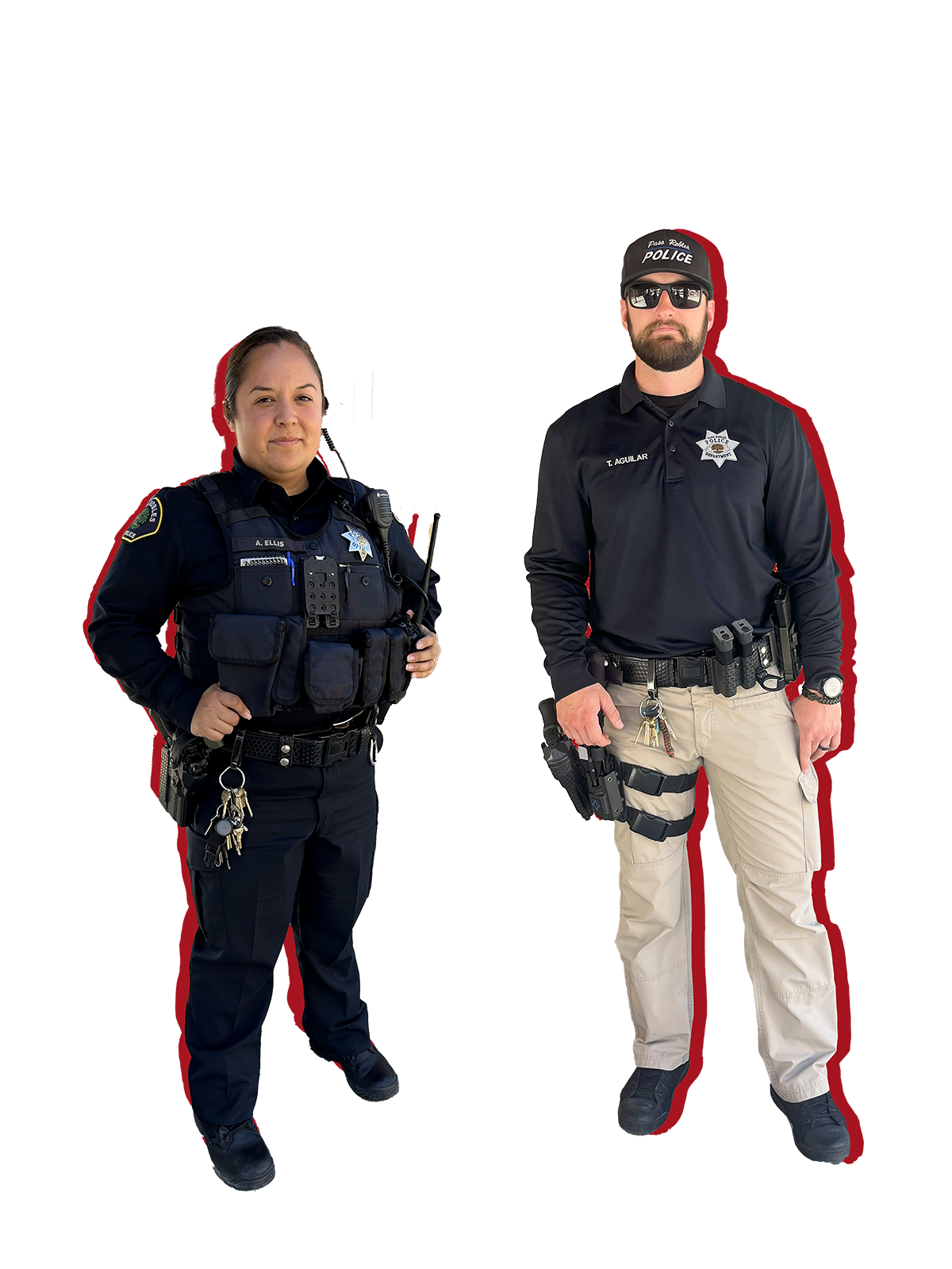
Today, the nightmare of a school shooting is unfortunately a reality, one that millions of teenagers are at the risk of experiencing. At Paso Robles High School, there are many rules and protections to help prevent this from happening, one of which being our on-campus School Resource Officers. These representatives are equipped to handle a dangerous situation such as a shooting, and there to help everyone on campus.
Here at PRHS, we have three of these officers: Officer Trevor Aguilar, Officer Alexandria Ellis, and Officer Joe Stanley. Daily, these hard-working qualified individuals are patrolling multiple schools around the district to ensure the protection of the thousands of students PRJUSD has.
To become an SRO, it first consists of the six-month long police academy program to become a qualified police officer, then requires additional juvenile-specific training for an SRO position. This is a three-year specialized assignment at a school, dealing with strictly juveniles, so it involves more education to best support the students.
“Our main goal is pretty much visual presence, and interaction with students and staff. We want to make sure that students know that we’re not just police officers, we’re there to help and kind of be seen: we’re just regular people that they interact with,” Aguilar said, describing their daily role on campus.
Due to the recent rise in school shootings nationally, this role has adapted to fit our changing needs. There is a larger focus on protection for students as well as simply being more aware of possible threats coming from social media or other platforms.
In the event of a school shooting, the only people on campus who will be acting against the threat would be these three SRO’s on campus. All admin, students, and teachers follow the ALICE protocol, whether it be evacuating, informing, or countering.
“SRO’s will be the first and only responder on campus until more police officers arrive, they will be facing the attack,”
Assistant Principal Michael Godsey said.
This response towards the threat is exactly why there are certified professionals on campus, to ensure the safety of our entire campus, students and staff alike. During an emergency, the SRO officers will be doing whatever they can to mitigate the threat naturally.
“Our modes and movements change depending on what we hear and what we see on the campus. If there’s active shooting, we’re going towards that active shooting. If there’s not, then we’re in a searching mode to find who it is,” Aguilar stated.
The officers’ focus during a situation is to face the threat head-on and dismantle the attacker, while the rest of the safety staff on campus is strictly tasked with protecting students; they will help them evacuate or get somewhere safe during an attack.
When discussing a topic as serious as this one, the top priority is always going to be prevention. This could be alerting/informing staff to possible threats, or preventing through policies on campus. When our campus is secure inside and outside, it reduces the rate of possible violence towards us. Administration is always looking for how to improve our security on campus, and many policies are put in place to achieve this goal of countering a possible attack.
“They’re [the shooter] not there to target one specific area. Generally, they’re there to inflict mass harm. So if there’s a locked door, they’re not going to spend a ton of time trying to open that door, because one, they know that we’re coming, and two, that’s not achieving their goals,” Aguilar said.
As this issue is so uncertain, but definitely possible, there is always room to grow and learn how to best protect our campus from possible harm, a dedicated mission that many take part in. Having SRO’s on campus is one of the best ways to be prepared in case of an emergency, and these individuals are committed daily to helping make our campus a safer place.

ALICE is an acronym that includes 5 steps you can apply to increase your chances of survival with an Active Shooter. These 5 steps include: Alert, Lockdown, Inform, Counter, Evacuate. “You may use only 1 or 2 parts of the response plan or you may have to utilize all 5. In this type of incident, your perception is the reality. You will be deciding the appropriate action to take.” (Tuscaloosa County Sheriff ’s Office) ALICE training has been implemented into PRJUSD safety.
Your donation will support the student journalists of Paso Robles High School. Your contribution will allow us to purchase equipment and cover our annual website hosting costs.










